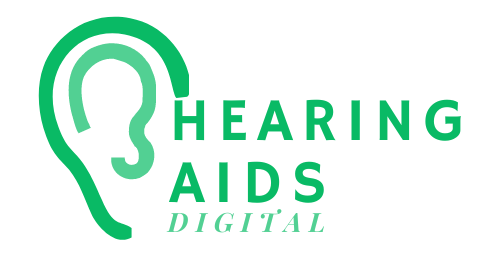In the healthcare industry, maintaining strict adherence to regulatory requirements is not just important; it is absolutely essential for the survival and success of any organisation. Non-compliance can lead to catastrophic outcomes, including severe legal repercussions, significant damage to an organisation’s reputation, and a compromise in the quality of patient care. Therefore, it is imperative for healthcare organisations to adopt a proactive strategy that encompasses regular compliance audits to safeguard their operations and ensure they are meeting all necessary standards.
Grasping the Significance and Procedure of a Compliance Audit
A compliance audit represents a detailed and systematic evaluation of an organisation’s compliance with pertinent laws, regulations, and guidelines. Within the healthcare sector, these audits are specifically designed to verify that healthcare providers, institutions, and organisations adhere to all regulatory mandates as outlined by governing bodies such as the Department of Health and Human Services (HHS), the Office for Civil Rights (OCR), and the Centers for Medicare and Medicaid Services (CMS).
These compliance audits entail a thorough examination of an organisation’s practices, policies, and procedures to uncover any possible violations or deficiencies. By engaging in these audits proactively, healthcare organisations can guarantee that they are functioning within the legal framework while simultaneously upholding the required standards of care.
The Crucial Role of Regular Compliance Audits in Healthcare Organisations

Carrying out regular compliance audits is essential for healthcare organisations for a multitude of compelling reasons:
1. Minimising Legal Risks Through Proactive Strategies
By actively participating in compliance audits, healthcare organisations can detect potential violations or lapses in their practices, policies, and procedures. This timely recognition enables them to address issues swiftly and implement necessary corrective measures, significantly lowering the risk of encountering legal repercussions.
Compliance with regulatory requirements extends beyond an ethical obligation; it is also a legal requirement for healthcare organisations. Failing to comply with regulations enforced by governmental bodies can result in substantial legal consequences, including hefty fines and sanctions. Thus, conducting compliance audits allows healthcare organisations to identify any areas of non-compliance and take decisive actions to effectively mitigate legal risks.
2. Safeguarding Patient Privacy and Ensuring Data Security
In an era where cyber threats and data breaches are on the rise, compliance audits are crucial for protecting patient privacy and securing sensitive data. These audits help ascertain that healthcare organisations have established robust security measures and are compliant with the Health Insurance Portability and Accountability Act (HIPAA) along with other relevant data protection regulations.
Protecting patient privacy and ensuring data security are of utmost importance in the healthcare industry. Healthcare organisations handle highly sensitive patient information, which encompasses medical records, personal details, and financial information. Any failure to safeguard this data can lead to severe consequences such as identity theft, financial fraud, and a breakdown of patient trust. Through compliance audits, healthcare organisations can evaluate the effectiveness of their data security measures, pinpointing vulnerabilities or gaps that require immediate attention.
3. Elevating the Overall Quality of Care Delivered

Compliance audits do not solely focus on regulatory adherence; they also evaluate the overall quality of care provided by healthcare organisations. By identifying areas that require enhancement, these audits contribute to bolstering patient safety, minimising medical errors, and improving the overall healthcare experience.
The primary aim of healthcare organisations is to deliver exceptional care to their patients. Compliance audits assist in assessing the organisation’s alignment with established quality standards and guidelines, ensuring that the care rendered meets essential requirements. By identifying any gaps or deficiencies in current practices, audits empower healthcare organisations to implement crucial improvements that elevate the overall quality of care.
4. Building Trust and Strengthening Reputation
Exhibiting compliance with regulatory requirements serves as a reflection of a healthcare organisation’s commitment to ethical practices and the welfare of patients. By proactively conducting audits and consistently demonstrating compliance, healthcare organisations can cultivate trust among patients, stakeholders, and the wider community, thereby bolstering their reputation.
Trust and reputation are invaluable assets for healthcare organisations. Patients and stakeholders expect healthcare providers to conduct their operations with integrity, uphold ethical standards, and prioritise patient well-being. By undertaking regular compliance audits and ensuring adherence to regulatory requirements, healthcare organisations can showcase their dedication to these principles. As a result, this fosters trust among patients, instills confidence in stakeholders, and enhances the overall reputation of the organisation.
Key Steps for Executing an Effective Compliance Audit
To conduct a compliance audit effectively, healthcare organisations should adhere to the following essential steps:
1. Establishing Clear and Specific Audit Objectives

The initial step in conducting a compliance audit is to establish clear objectives. These objectives should align with the specific regulatory requirements relevant to the healthcare organisation, ensuring that the audit focuses on areas that present the highest risk or necessitate immediate attention.
To define audit objectives effectively, healthcare organisations must identify the particular regulations and guidelines applicable to their operations. This may encompass laws related to patient privacy, data security, billing and coding, medication management, and various other aspects. By understanding the regulatory landscape and aligning the audit objectives accordingly, healthcare organisations can ensure that the audit is thorough and targeted.
2. Conducting a Comprehensive Risk Assessment
Before commencing the audit, it is essential to perform a thorough risk assessment. This process involves identifying potential compliance risks and evaluating their likelihood and potential impact. This assessment assists in prioritising audit activities and effectively allocating resources.
A risk assessment entails analysing the organisation’s operations, processes, and systems to pinpoint areas that may pose a higher risk of non-compliance. This may include examining the organisation’s data security measures, staff training programmes, documentation practices, and internal control mechanisms. By executing a thorough risk assessment, healthcare organisations can direct their audit efforts toward areas that require immediate attention and allocate resources appropriately.
3. Crafting a Comprehensive Audit Plan
After establishing objectives and completing a risk assessment, the next step is to develop a detailed audit plan. This plan outlines the scope of the audit, specific areas to be examined, the methodology to be employed, and the timeline for conducting the audit. It is crucial to involve key stakeholders, including compliance officers, legal counsel, and clinical staff, in the development of this audit plan.
The audit plan serves as a blueprint for the entire audit process. It provides a clear outline of the activities to be undertaken, the responsibilities assigned to each team member, and the timeline for completing the audit. By including key stakeholders in the audit plan development, healthcare organisations can ensure that all relevant perspectives and expertise are incorporated, resulting in a more comprehensive and effective audit.
4. Systematic Data Collection and Analysis
During the audit process, it is vital to systematically collect and analyse relevant data and documentation. This includes scrutinising policies, procedures, patient records, training materials, and any other documentation pertinent to regulatory compliance. The data analysis phase aims to identify discrepancies, non-compliance issues, or areas requiring enhancement.
Data collection is a fundamental component of the compliance audit process. It involves gathering and reviewing various types of data, including written policies and procedures, training records, incident reports, and documentation related to patient care. By analysing this data, auditors can identify any deviations from regulatory requirements, potential non-compliance issues, or gaps in existing practices that need addressing.
5. Engaging in Interviews and Observations During the Audit
In addition to data analysis, it is crucial to conduct interviews and observations as part of the audit process. Interviews with key personnel, including healthcare providers, administrators, and staff, help to gather insights into their understanding of compliance requirements and to identify any potential gaps or issues. Observations of daily operations provide an opportunity to assess compliance practices in real-time.
Interviews offer auditors invaluable information regarding the organisation’s compliance culture, knowledge of regulatory requirements, and adherence to established policies and procedures. By engaging with key personnel, auditors can gain insights into the organisation’s compliance efforts and pinpoint areas that may warrant further investigation. Furthermore, observations of daily operations allow auditors to evaluate how compliance practices are implemented in practice, providing a more holistic view of the organisation’s compliance status.
6. Comprehensive Documentation of Findings and Recommendations
All audit findings, observations, and recommendations should be documented clearly and concisely. This documentation acts as a reference for the healthcare organisation to address identified issues and implement necessary corrective actions. It also provides evidence of compliance efforts during potential regulatory inspections or audits.
The thorough documentation of audit findings and recommendations is essential for healthcare organisations to grasp the scope and severity of any identified issues. It serves as a roadmap for implementing necessary improvements and corrective actions. The documentation should clearly outline the findings, provide supporting evidence, and offer actionable recommendations to address any identified non-compliance or areas needing enhancement.
7. Timely Implementation of Corrective Actions
Once the audit findings are documented, it is crucial for healthcare organisations to implement prompt and appropriate corrective actions. This may involve revising policies and procedures, providing additional staff training, enhancing data security measures, or integrating new systems or technologies. Swift corrective actions not only mitigate identified risks but also demonstrate a commitment to ongoing improvement.
Implementing corrective actions is a vital aspect of the compliance audit process. It entails addressing any identified non-compliance, deficiencies, or areas for improvement uncovered during the audit. By taking timely and appropriate corrective actions, healthcare organisations can effectively mitigate potential risks and ensure sustained compliance with regulatory requirements. This demonstrates a commitment to continuous enhancement and strengthens the organisation’s overall compliance culture.
8. Establishing a Framework for Continuous Monitoring and Improvement
Compliance audits are not a one-off event but rather an ongoing process. Healthcare organisations should implement robust monitoring mechanisms to ensure sustained compliance. Regular internal audits, periodic risk assessments, and ongoing staff training contribute to fostering a culture of compliance and driving continuous improvement.
To maintain long-term compliance, healthcare organisations should develop monitoring mechanisms that enable ongoing evaluation of their compliance efforts. This may include conducting regular internal audits, performing periodic risk assessments, and providing continuous staff training on regulatory requirements. By consistently monitoring compliance, healthcare organisations can identify emerging issues, address them promptly, and promote continuous improvement in their compliance practices.
Cultivating a Culture of Compliance to Enhance Patient Care
In the dynamic and highly regulated healthcare industry, compliance audits serve as an indispensable tool for healthcare organisations to ensure regulatory compliance, mitigate legal risks, protect patient data, enhance the quality of care, and foster trust. By embracing a proactive approach and adhering to the key steps outlined, healthcare organisations can cultivate a culture of compliance that ultimately promotes optimal patient care.
Note: This article is provided in markdown format as requested.
English
Frequently Asked Questions Regarding Compliance Audits
1. What is a compliance audit?
A compliance audit is a structured review and assessment of an organisation’s adherence to relevant laws, regulations, and guidelines. In the context of healthcare, compliance audits focus on ensuring that healthcare providers conform to regulatory requirements imposed by government agencies.
2. Why are compliance audits significant in healthcare?
Compliance audits are vital in healthcare for various reasons. They help mitigate legal risks, protect patient privacy and data security, enhance the quality of care, and build trust and reputation for healthcare organisations.
3. What are the key steps in executing a compliance audit?
The fundamental steps in conducting a compliance audit include defining audit objectives, performing a risk assessment, developing an audit plan, gathering and analysing data, conducting interviews and observations, documenting findings and recommendations, implementing corrective actions, and establishing monitoring and continuous improvement.
4. How do compliance audits benefit healthcare organisations?
Compliance audits benefit healthcare organisations by identifying potential violations or gaps, addressing legal risks, safeguarding patient privacy and data security, enhancing the quality of care, and building trust and reputation among patients, stakeholders, and the community.
Originally posted 2024-04-07 05:04:36.
The post Compliance Audits: Proactively Meeting Healthcare Regulations appeared first on Healthcare Marketing Service.


